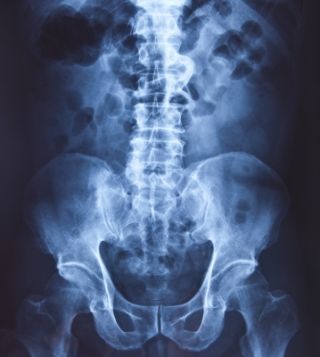Anorexia Nervosa
Osteoporosis and Male Anorexia Nervosa
Osteoporosis is often overlooked in males with anorexia nervosa.
Posted December 26, 2012

When the lay public and health professionals alike think of osteoporosis – a disease that causes brittle bones – they think of post-menopausal women. And, in fact, about half of all women over 50 will develop osteoporosis (National Osteoporosis Foundation, 2012).
There is increasing recognition that osteoporosis frequently occurs as a result of the malnutrition associated with anorexia nervosa. Because osteoporosis is associated with women, however, it is often forgotten about and overlooked in males with the disorder.
One protective factor against osteoporosis in males is that they have higher testosterone levels than females (Scurlock, Timimi, & Robinson, 1997). However, males with AN have significantly lower testosterone levels than their peers. In recent years, cases of males with AN who simultaneously develop osteoporosis have been reported in the literature (e.g., Scurlock, Timimi, & Robinson, 1997).
At the annual meeting of the Eating Disorders Research Society, research was presented that showed that males with AN, particularly those with the binge-purge subtype, may be at greater risk for osteoporosis than their female counterparts. Of 70 consecutive male admissions to an eating disorders clinic, 36% had osteopenia, or preosteoporosis, and 26% had osteoporosis of the lumbar spine. Furthermore, the bone densities of males were significantly lower than in a control group of females (Men with eating disorders at high risk of osteoporosis, 2008).
Jay is a 16-year-old male whose parents brought him to his primary care doctor because his weight had dropped substantially over the past six months. While Jay sat in the corner of the consulting room feeling particularly embarrassed, his parents recounted recent changes in his behavior and appearance. In addition to losing over 20lbs, Jay’s dentist had noted that the enamel had begun to erode from his teeth at a recent dental checkup. Jay’s mother had observed that Jay's hair was thinning and had often found hair in the shower drain. To the physician’s credit, she immediately recognized the presence of an eating disorder and began multi-model treatment that provided a stable platform for Jay’s eventual recovery.
Two years later, Jay is largely recovered from anorexia nervosa. But when he broke his foot during a recent accident playing soccer, his physician discovered that Jay had remarkably low bone density for his age. In all likelihood, his physician speculated, this was due to his struggle with anorexia nervosa in the past. If his treatment team had considered the possibility that Jay might develop low bone density as a result of malnutrition, supplementation could have been initiated, which may have reduced the degree of Jay’s loss of bone density.
Sources:
Men with eating disorders at high risk of osteoporosis. (2008, January/February). Eating disorders review: Current clinical information for the professional treating eating disorders, 19(1). Gürze Books.
National Osteoporosis Foundation (2012). What is osteoporosis? Retrieved December 26, 2012, from http://www.nof.org/articles/7.
Scurlock, H., Timimi, S., & Robinson, P.H. (1997). Case report: Osteoporosis as a complication of chronic anorexia nervosa in a male. European Eating Disorders Review, 5(1), 42-46.


